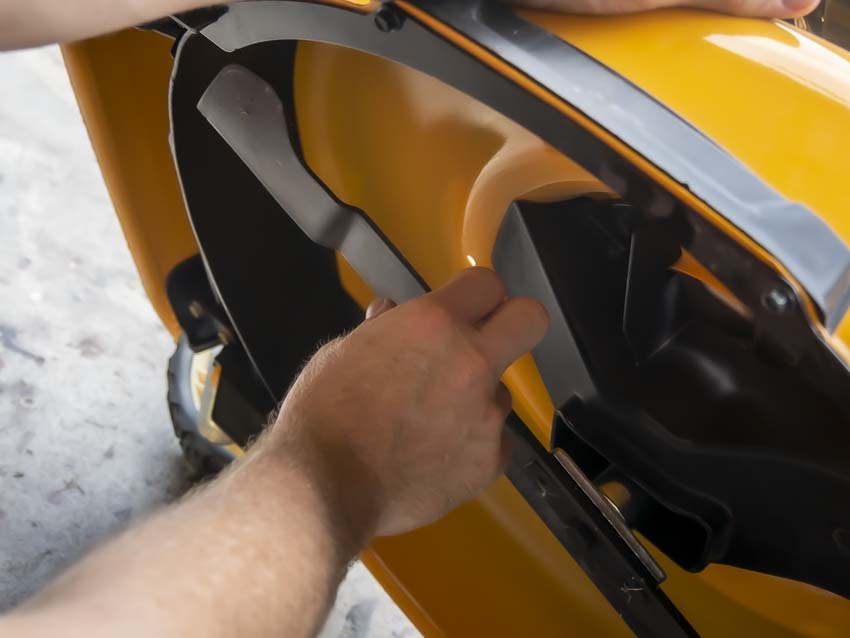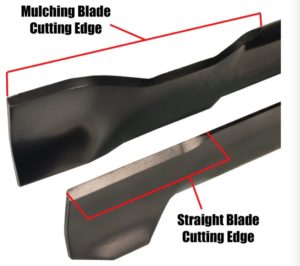Lawn mower blades come in a variety of shapes and sizes. Maybe you’ve been curious as to why that is? The reason for the variety in sizes probably doesn’t warrant too much explanation. However, we can tell you why many mower blades look like they’ve been beaten into unintelligible shapes. Various lawn mowers require different aerodynamics to accomplish their purpose. As a result, lawn mower blades come in various types to match those different applications.
What Lawn Mower Blade Types Do You Need?
Before really trying to understand the various lawn mower blade types, it’s helpful to know how a lawn mower cuts grass in the first place. For a blade to effectively cut grass, it needs to pull each blade or stalk up into its cutting path. It also needs to provide resistance on both ends of the grass. This keeps the mower blade from simply slapping the grass back down to the soil uncut.
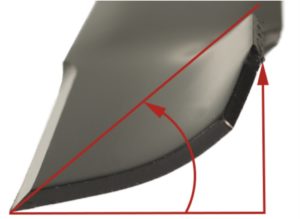
To achieve this, blade manufacturers have borrowed and tweaked a design from aviation. Similar to how the wing of an airplane harnesses wind resistance to provide lift, a lawn mower blade has an uptick at the back of the blade. This creates lift and pulls air upward as it spins. Pulled by this uplift, the grass stands up for the blade—the suction providing some resistance on both ends. This lets the mower blade actually cut.
Of course, different angles of upturn at the back of the blade produce different results. Manufacturers design blades with different lift types and cutting edges to serve different applications.
Standard or Deck Blades
Sometimes referred to as 2-in-1 blades, standard blades probably get the most use in the lawn trimming game. For the most part, these blades have an aerodynamic design. It places less strain on the engine as it turns. The front cutting edge remains flat. On that back edge, a slight upturn generates a continuous “suck and cut” action.
Because these mower blade types provide great lift in one direction, they provide excellent results when side discharging and bagging.
Low Lift Blades
When you mow sandy grass, a low lift type of mower blade works best. These provide enough lift for the blade to cut your grass, but not so much that your super sandy lawn also gets pulled into the deck. The reason has to do with the size of the rear wing on the blade. It provides less lift than the standard type of mower blade.
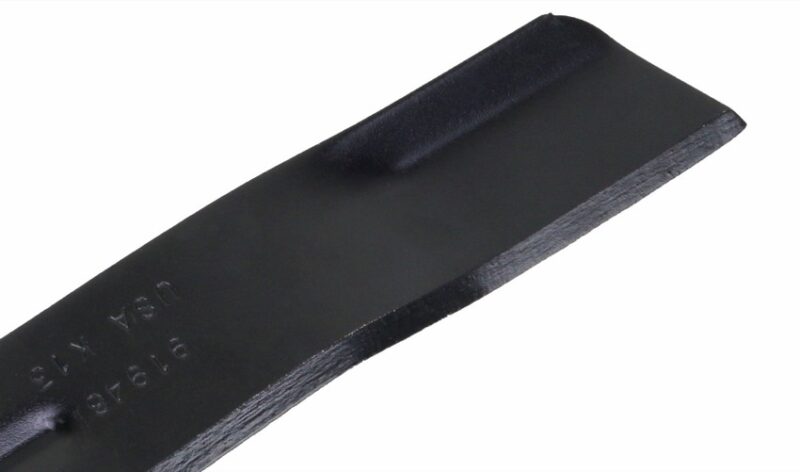
These blades won’t cut as well on beefier grasses compared to a higher-lift blade. However, they don’t kick up as much dust. Also, since they produce less drag, these blades consume less fuel as well.
High Lift Blades
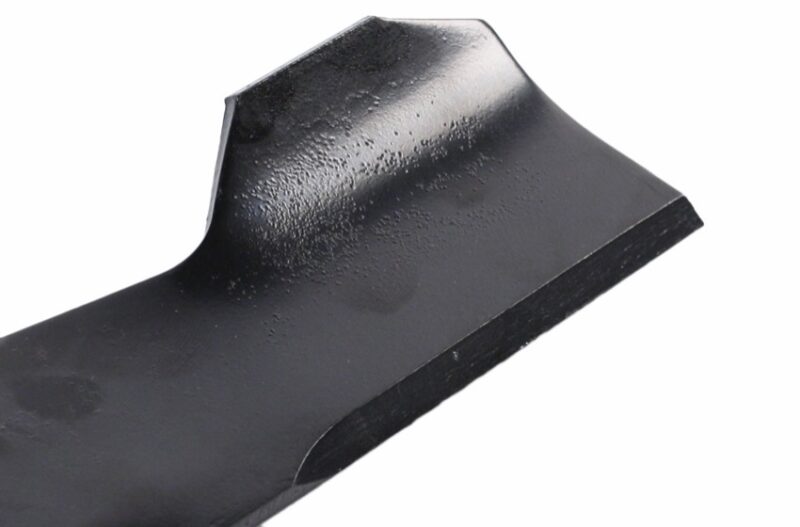
With a more dramatic upturn at the back of the blade, the high lift type of mower blade produces much more lift. Because it produces so much lift, a high lift blade requires a more powerful engine to work well. Consequently, it can cost a bit more in fuel to use it. But, it generally results in a better cut in thicker grasses. It’s an ideal choice for when you’re bagging up your clippings since the improved lifting force can rocket the clippings up and out of the deck.
Mulching Blades
The mulching blade has a more unique design than either standard or high-lift blades. Rather than employing a relatively straight cutting edge with a raised wing in the back, the mulching blade has several bevels and lift areas.
This design lets your mower suck the grass upward to be cut. Then, however, the clippings fly around the deck only to get chopped up even more. The middle part of the mulching blade, the weird bit, is designed to send the nutrient-rich, fine-cut clippings back to the ground where they can feed the soil.
You can still bag or side discharge with a mulching blade if you prefer. However, these blades don’t provide as much lift as your standard blades. They also perform much better with maintenance cuts than overgrown grass.
Specialty Blades
Finally, some blades seem to do their own thing. Take the Arnold Power Rake, for example. You can choose to mulch and bag with it (though there are better options if that’s all you’re looking to do), but this mower blade’s purpose is primarily to rake, dethatch, and scalp your lawn.
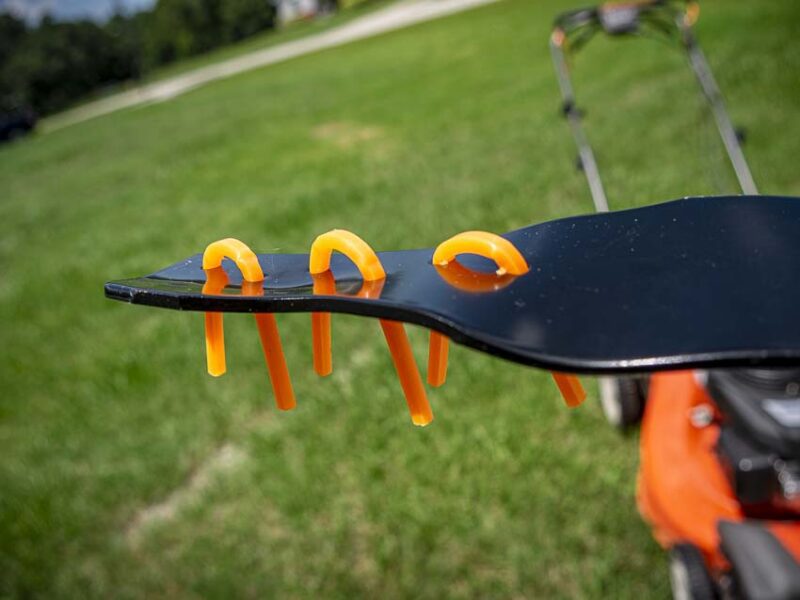
Or, take Honda Commercial‘s MicroCut Twin Blade System from their HRC line. It uses two blades stacked on top of each other and offset. In this instance, the blades themselves don’t have a terribly unorthodox design, but there are two of them. The idea here is that you get a cleaner cut and finer mulching performance since there are two blades cutting into the grass clippings as they circulate under the deck.
Choosing Mower Blade Types
In any case, when it comes to selecting your mower blade types, it’s best to keep in mind your particular application. Do you plan on bagging up your clippings or leaving them in the yard? What sort of lawn conditions are you working with? Is your grass thick and overgrown or patchy and sandy? Are you trying to win awards for the best lawn, or you just trying to get the lawn mowed before the neighbors complain? Knowing the differences between the various lawn mower blade types will help you achieve the type of cut that works best for you.

